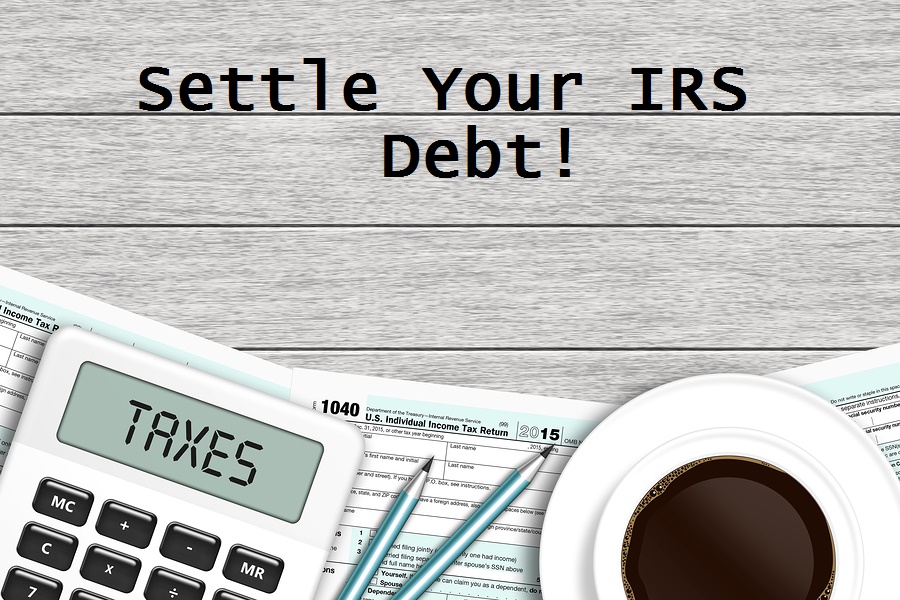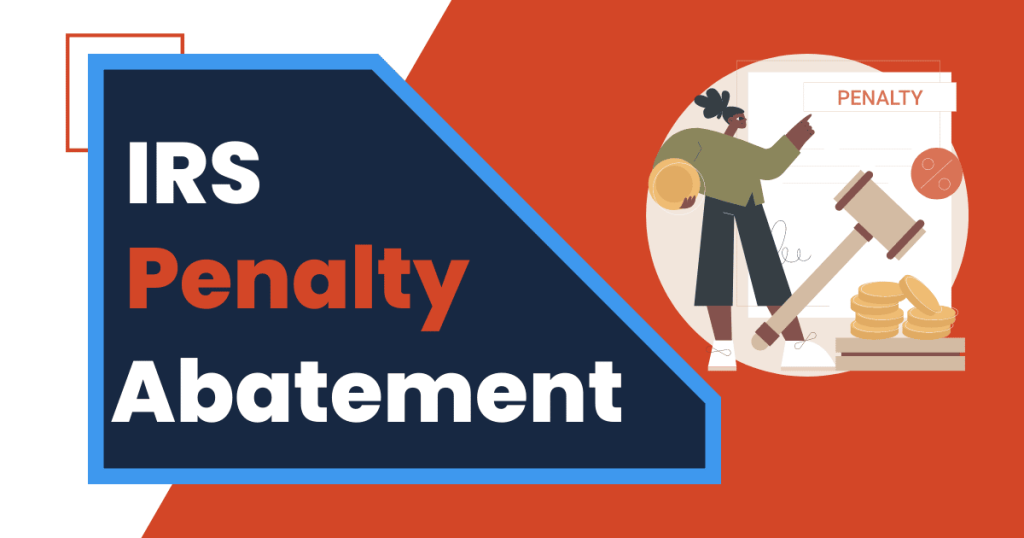
by Renee Lawson | Sep 8, 2025 | Tax Preparation, Tax Resolution
Dealing with tax debt can feel overwhelming, especially when you’re trying to stay afloat financially. Fortunately, there are effective strategies to address your tax obligations without draining your bank account. The IRS offers several programs and relief options, but knowing which one works best for your situation is crucial.
In this blog, we’ll cover 10 strategies to settle your tax debt in a way that’s manageable and financially feasible. At Action Tax Relief we specialize in resolving tax debt and you contact us at www.actiontaxrelief.com or call 937-268-2737 to take steps today to resolve your tax debt.
1. Understand Your Tax Debt
Before diving into solutions, it’s important to understand the full scope of your tax debt. Request a transcript from the IRS to review how much you owe, including interest and penalties. This step helps you make informed decisions about the best resolution strategy.
2. Set Up an Installment Agreement
An installment agreement allows you to pay your tax debt in manageable monthly payments. The IRS offers two types of plans:
- Short-term plans (under 180 days) for smaller balances
- Long-term plans for larger balances, often requiring a setup fee
While interest and penalties continue to accrue, spreading payments over time makes it easier to manage your finances.
3. Apply for an Offer in Compromise (OIC)
An Offer in Compromise allows you to settle your tax debt for less than the total amount owed. To qualify, you must demonstrate that paying the full amount would create financial hardship. The IRS considers factors like your income, expenses, and assets when evaluating your eligibility.
An OIC can be a game-changer, but it requires thorough preparation and documentation. You should know that are strict requirements and not everyone qualifies. Working with a tax resolution specialist can significantly increase your chances of approval.
4. Request a Penalty Abatement
Penalties can make up a significant portion of your tax debt. If you’ve faced circumstances beyond your control—such as a medical emergency or natural disaster—you may qualify for penalty abatement. The IRS offers relief through:
- First-Time Penalty Abatement
- Reasonable Cause Penalty Relief
Submitting a well-documented request can lead to substantial savings.
5. Consider Currently Not Collectible (CNC) Status
If paying your tax debt would leave you unable to cover basic living expenses, you can request to be placed in “Currently Not Collectible” status. This temporarily halts IRS collection efforts, including wage garnishments and levies.
While interest continues to accrue, CNC status gives you breathing room to stabilize your financial situation.
6. File All Missing Tax Returns
If you have unfiled tax returns, the IRS may assess your tax debt based on estimates, which often overstate your actual liability. Filing your missing returns can reduce the debt and open the door to resolution options.
Failing to file can also disqualify you from programs like Offers in Compromise or installment agreements.
7. Protect Yourself From Collection Actions
If you’re struggling with tax debt, it’s crucial to understand your rights and how to protect yourself from aggressive IRS collection actions like liens, levies, and wage garnishments.
- Request a Collection Due Process Hearing: If you’ve received a Final Notice of Intent to Levy, you have the right to request a hearing to appeal the action. This can halt collections temporarily while your case is reviewed.
- Submit Form 911: The Taxpayer Advocate Service (TAS) can intervene if you’re experiencing significant financial hardship due to IRS actions. Submitting Form 911 can help protect you while working on a resolution.
Understanding your rights and acting proactively can prevent financial devastation while you work toward resolving your tax debt.
8. Challenge the Debt Through Audit Reconsideration
If your tax debt arises from an IRS audit and you believe the findings were incorrect, you can request an audit reconsideration. This involves submitting additional documentation to dispute the audit results.
While this process doesn’t guarantee a reduction in debt, it’s worth pursuing if you have strong evidence to support your case.
9. Negotiate a Partial Payment Installment Agreement (PPIA)
A Partial Payment Installment Agreement allows you to pay less than the full amount owed over time. Unlike a regular installment agreement, a PPIA reduces your total liability.
The IRS reviews your financial situation every two years to determine if you’re still eligible, so it’s important to keep your finances in order.
10. Seek Professional Help
Navigating IRS programs and negotiations can be complex and time-consuming. A tax resolution specialist can analyze your financial situation, determine the best strategy, and negotiate on your behalf.
Professionals have the expertise to handle IRS communications and ensure your case is presented in the best possible light.
Tips for Success When Settling Tax Debt
- Act Quickly
The sooner you address your tax debt, the more options you’ll have for resolution. Delaying action can lead to additional penalties and interest.
- Stay Organized
Keep all financial records, IRS notices, and correspondence in one place to streamline the resolution process.
- Be Honest and Transparent
Accurate and truthful communication with the IRS is essential for resolving your debt effectively.
- Understand Your Rights
Taxpayers have rights during the resolution process, including the right to representation and the right to appeal IRS decisions.
Conclusion
Tax debt can feel like an insurmountable burden, but you have options to address it without breaking the bank. From installment agreements to Offers in Compromise and penalty abatements, there’s a strategy for every financial situation.
Remember, seeking professional help can make a significant difference in the outcome. Contact Action Tax Relief www.ActionTaxRelief.com or call 937-268-2737 to connect with experienced tax resolution specialists who can guide you through the process and help you achieve financial peace of mind.
Take the first step toward resolving your tax debt today!

by Renee Lawson | Jul 28, 2025 | Tax Preparation, Tax Resolution
Learn the Requirements
Tax penalties can significantly increase the amount you owe to the IRS or state tax agencies, turning an already challenging financial situation into an overwhelming one. However, you might not have to pay those penalties in full. The IRS offers penalty abatement programs that can reduce or eliminate penalties in certain situations.
In this blog, we’ll discuss what penalty abatement is, the eligibility requirements, and how to determine if you qualify. If tax penalties are adding to your stress, this blog will help you explore a potential solution. If you need further assistance with your tax debt, please reach out to Action Tax Relief by calling 937-268-2737.
What is Penalty Abatement?
Penalty abatement is a relief option provided by the IRS to reduce or eliminate certain penalties imposed on taxpayers. While the IRS charges penalties for late filing, late payment, and non-compliance with tax laws, they recognize that there are legitimate reasons why taxpayers may fail to meet their obligations.
Common penalties that may qualify for abatement include:
- Failure to File penalties for not submitting your tax return on time.
- Failure to Pay penalties for not paying the full amount of tax owed by the due date.
- Accuracy-Related penalties for underreporting income or other tax inaccuracies.
If granted, penalty abatement can significantly reduce the financial burden, but you must meet specific criteria to qualify.
Eligibility Requirements for Penalty Abatement
The IRS evaluates penalty abatement requests based on specific criteria. Here are the most common scenarios under which taxpayers may qualify:
1. Reasonable Cause
The IRS may grant penalty relief if you can show that your failure to comply was due to a reasonable cause. Acceptable reasons include:
- Serious illness or injury affecting you or a family member.
- Natural disasters, fires, or other unforeseen events.
- Inability to obtain necessary financial records.
- Reliance on incorrect professional advice.
You’ll need to provide documentation to support your claim, such as medical records, insurance reports, or legal documents.
2. First-Time Penalty Abatement (FTA)
If you’ve been compliant with your tax filings and payments in the past, you may qualify for First-Time Penalty Abatement. To be eligible, you must meet the following criteria:
- No penalties for the prior three tax years (except estimated tax penalties).
- All required returns filed for the current year.
- Any outstanding tax due has been paid or arrangements made to pay.
FTA is one of the most commonly granted forms of penalty abatement because it rewards taxpayers with a history of compliance.
3. Administrative Waivers
In some cases, the IRS may issue administrative waivers when penalties are incorrectly assessed or if there are systemic issues with tax agency operations. If this applies to you, the penalties can be removed without significant documentation requirements.
Steps to Request Penalty Abatement
If you believe you qualify for penalty abatement, here’s how you can take action:
1. Assess Your Eligibility
Review your circumstances and determine whether you meet the criteria for reasonable cause, First-Time Penalty Abatement, or an administrative waiver.
2. Submit a Request
Requests for penalty abatement can be made in writing or over the phone. If you’re submitting a written request, you’ll need to send Form 843, Claim for Refund and Request for Abatement, to the IRS, along with supporting documentation. For simpler cases, you can call the IRS directly to make your request.
3. Gather Supporting Documents
If you’re applying under reasonable cause, collect the evidence needed to support your claim, such as medical bills, repair invoices, or a letter from your tax professional.
4. Wait for a Decision
The IRS will review your request and notify you of their decision. This process can take several weeks or even months, depending on the complexity of your case.
Common Mistakes to Avoid When Requesting Penalty Abatement
Submitting a request for penalty abatement can be challenging, and mistakes may lead to delays or denials. Here are some common pitfalls to avoid:
1. Failing to Provide Sufficient Documentation
Your request must be backed by evidence. Without proper documentation, the IRS is unlikely to approve your claim.
2. Overlooking the First-Time Penalty Abatement Option
Many taxpayers don’t realize they qualify for First-Time Penalty Abatement. Review your history to see if you meet the criteria.
3. Ignoring the Importance of Compliance
You must be current with all tax filings and payments before the IRS will consider your request. Ensure your current tax obligations are up to date.
4. Procrastinating
The sooner you address penalty abatement, the better. Delays can lead to additional penalties and interest accumulating on your tax debt.
When Should You Apply for Penalty Abatement?
The ideal time to apply for penalty abatement is as soon as you’re aware of the penalties. Prompt action can prevent additional interest and penalties from accruing. Common scenarios where you should consider applying include:
- Receiving a penalty notice from the IRS or state tax agency.
- Experiencing a life event or hardship that prevented timely compliance.
- Discovering errors in penalties assessed by the IRS.
- Learning about your eligibility for First-Time Penalty Abatement.
The Role of a Tax Resolution Specialist in Penalty Abatement
Navigating the penalty abatement process can be complex, especially if your case involves significant penalties or multiple years of non-compliance. A tax resolution specialist can:
- Assess Your Eligibility: Evaluate whether you qualify for penalty abatement and recommend the best course of action.
- Prepare Your Request: Draft a compelling request with all necessary documentation to support your case.
- Communicate with the IRS: Act as your representative, handling all correspondence and negotiations with tax authorities.
- Advocate for You: Protect your rights as a taxpayer and ensure you receive fair treatment throughout the process.
Conclusion
Tax penalties can create significant financial stress, but penalty abatement provides a pathway to relief. Whether you qualify due to reasonable cause, First-Time Penalty Abatement, or an administrative waiver, taking action can reduce your financial burden and help you regain control of your tax situation.
If you’re unsure of your eligibility or need help navigating the process, a tax resolution specialist can guide you every step of the way. Don’t let penalties hold you back Action Tax Relief www.ActionTaxRelief.com or call 937-268-2737 to start resolving your tax issues today.

by Renee Lawson | Jul 14, 2025 | Tax Preparation, Tax Resolution
Can You Settle for Less?
If you’re overwhelmed by tax debt and struggling to see a way out, the IRS has a program that might be the lifeline you need. It’s called an Offer in Compromise (OIC), and it allows taxpayers to settle their tax debt for less than the full amount owed. While this program can offer significant relief, not everyone qualifies, and the application process can be complex.
In this blog, we’ll break down everything you need to know about Offers in Compromise—how they work, eligibility criteria, and how to determine if it’s the right option for you. If after reading this you need further assistance please contact Action Tax Relief by calling 937-268-2737.
What Is an Offer in Compromise?
An Offer in Compromise is a program offered by the IRS that allows eligible taxpayers to resolve their tax debt for less than the total amount owed. The IRS agrees to accept a lower amount if it believes the taxpayer cannot reasonably pay the full debt through traditional means, such as a payment plan or asset liquidation.
This program provides a fresh start to taxpayers who are experiencing financial hardship, allowing them to settle their debt and move forward without the looming burden of back taxes.
How Does the Offer in Compromise Process Work?
The Offer in Compromise process involves several key steps:
1. Submitting Your Application
Taxpayers must submit Form 656, Offer in Compromise, along with Form 433-A (OIC) for individuals or Form 433-B (OIC) for businesses. These forms provide the IRS with detailed financial information, including income, expenses, and assets.
2. Paying the Application Fee
Most applicants are required to pay a $205 application fee. However, this fee may be waived for taxpayers who qualify as low-income.
3. Choosing a Payment Option
When submitting an OIC, you must propose how you plan to pay the offered amount. The IRS offers two main payment options:
- Lump-Sum Cash Offer: Pay 20% of the offered amount upfront and the remaining balance within five months of acceptance.
- Periodic Payment Offer: Make the first payment with your application and continue paying monthly installments while the IRS reviews your offer.
4. IRS Evaluation
The IRS carefully reviews your application, assessing whether the amount you’re offering is the most they can reasonably expect to collect. This evaluation includes a thorough analysis of your financial situation.
5. Decision
If the IRS accepts your offer, you must comply with all tax laws for the next five years to avoid defaulting on the agreement. If the offer is denied, you may appeal the decision or explore other resolution options.
Eligibility Criteria for Offer in Compromise
Not everyone qualifies for an Offer in Compromise. To be considered, you must meet specific eligibility requirements:
1. All Tax Filings Must Be Current
You must have filed all required tax returns before submitting your OIC application.
2. Required Estimated Payments Made
If you’re self-employed, you must be current on estimated tax payments for the current tax year.
3. No Open Bankruptcy Proceedings
Taxpayers in active bankruptcy are not eligible for an Offer in Compromise.
4. Demonstrated Inability to Pay in Full
The IRS evaluates your Reasonable Collection Potential (RCP), which is based on your income, expenses, and assets. If your RCP is less than the total tax debt, you may qualify for an OIC.
Reasons the IRS May Accept an Offer in Compromise
The IRS generally accepts Offers in Compromise under three circumstances:
1. Doubt as to Collectibility
This applies when there is little chance the IRS will collect the full tax debt due to your financial situation.
2. Doubt as to Liability
If there’s a legitimate dispute over whether the assessed tax debt is correct, the IRS may accept an OIC.
3. Effective Tax Administration
Even if you can technically afford to pay the full amount, the IRS may accept an OIC if collecting the debt would create economic hardship or be unfair due to special circumstances.
Benefits of an Offer in Compromise
Settling your tax debt through an Offer in Compromise has several advantages:
- Reduced Financial Burden: You pay less than the full amount owed, freeing up resources for other financial obligations.
- Fresh Start: Resolving your tax debt allows you to move forward without the fear of liens, levies, or garnishments.
- Peace of Mind: Eliminating the stress of unpaid taxes can improve your overall well-being.
Challenges of the Offer in Compromise Process
While the OIC program offers significant benefits, it’s not without challenges:
1. Complex Application Process
Submitting an accurate and compelling OIC application requires extensive documentation and knowledge of IRS procedures.
2. Low Acceptance Rate
The IRS accepts only a fraction of OIC applications each year, typically around 30%.
3. Continued Compliance Requirement
Even after your offer is accepted, you must comply with all tax laws for five years. Failure to do so can void the agreement.
How to Improve Your Chances of Success
To increase your likelihood of having an Offer in Compromise accepted:
- Be Honest and Thorough: Provide accurate and complete financial information.
- Seek Professional Help: A tax resolution specialist can help you prepare a strong application and negotiate with the IRS on your behalf.
- Stay Current with Tax Obligations: Make sure all required filings and payments are up to date before applying.
Is an Offer in Compromise Right for You?
An Offer in Compromise can be a valuable tool for resolving tax debt, but it’s not the best solution for everyone. You may benefit from exploring alternative options, such as:
- Installment Agreements: Spread your tax payments over time.
- Penalty Abatement: Request a reduction or elimination of penalties.
- Currently Not Collectible Status: Temporarily halt collection efforts if you’re facing financial hardship.
Each taxpayer’s situation is unique, so it’s essential to consult with a professional to determine the most appropriate strategy.
Conclusion
An Offer in Compromise provides a potential path to financial freedom for taxpayers burdened by overwhelming tax debt. While the process can be complex and challenging, the rewards of a successful OIC can be life-changing.
If you’re considering an Offer in Compromise, don’t navigate the process alone. Contact Action Tax Relief www.ActionTaxRelief.com or call 937-268-2737 to schedule a consultation with an experienced tax resolution specialist. Let us help you take the first step toward resolving your tax debt and regaining control of your financial future.

by Renee Lawson | Jun 16, 2025 | Tax Preparation, Tax Resolution
Dealing with tax issues can be one of the most stressful experiences in life. Whether it’s a notice from the IRS, a mounting tax debt, or a complex audit, many people find themselves overwhelmed and unsure of how to proceed. Recognizing when you need professional help, like the kind we provide at Action Tax Relief, and understanding what a tax resolution specialist does are crucial steps toward resolving your tax problems effectively.
In this blog, we’ll explore how to know when you need a tax resolution specialist and how they help you regain control of your financial situation.
Signs You Need a Tax Resolution Specialist
If you’re unsure whether you need professional assistance, here are some common signs that it’s time to contact a tax resolution specialist:
1. Receiving Notices from the IRS or State Tax Agency
If you’ve received letters or notices from the IRS or your state tax agency, it’s essential to address them promptly. Ignoring these communications can lead to more severe consequences, such as penalties, interest, or even legal action.
2. Facing Wage Garnishments or Bank Levies
When the IRS or a state tax agency begins garnishing your wages or levying your bank account, it’s a clear sign that immediate action is needed. A tax resolution specialist can help stop these aggressive collection actions and negotiate a resolution.
3. Owing Back Taxes You Can’t Afford to Pay
If you owe more taxes than you can reasonably pay, a specialist can help you explore options like installment agreements or Offers in Compromise to reduce your burden.
4. Being Selected for a Tax Audit
Audits can be intimidating, especially if you’re unsure of how to respond. A tax resolution specialist can guide you through the process, ensuring that your rights are protected, and your case is presented effectively.
5. Struggling with Complex Tax Laws
Tax laws are notoriously complicated, and even small mistakes can lead to significant penalties. If you’re struggling to navigate the rules or feel overwhelmed by your situation, a specialist’s expertise can make all the difference.
What Does a Tax Resolution Specialist Do?
A tax resolution specialist is a licensed professional—usually a Certified Public Accountant (CPA), Enrolled Agent (EA), or tax attorney—who specializes in helping individuals and businesses resolve tax issues. Here’s how they can assist:
1. Assessing Your Tax Situation
Tax resolution specialists begin by analyzing your financial records, tax returns, and correspondence with the IRS or state tax agencies. This thorough assessment allows them to identify the root of the problem and develop a tailored strategy for resolution.
2. Navigating Tax Laws and Procedures
With their in-depth knowledge of tax laws and IRS procedures, specialists can ensure compliance and help you avoid additional penalties. They know how to interpret complex regulations and apply them to your unique circumstances.
3. Representing You Before Tax Agencies
Dealing with the IRS or state tax agencies can be stressful and intimidating. A tax resolution specialist acts as your representative, handling all communication and negotiations on your behalf. This not only reduces your stress but also improves your chances of a favorable outcome.
4. Negotiating Settlements and Payment Plans
Whether it’s an Offer in Compromise, penalty abatement, or an installment agreement, tax resolution specialists are skilled negotiators. They work to secure the best possible terms for you, helping to resolve your tax issues efficiently.
5. Protecting Your Rights
Taxpayers have rights, and a tax resolution specialist ensures that those rights are upheld. They act as your advocate, ensuring that you’re treated fairly throughout the resolution process.
Common Tax Issues Addressed by Specialists
Here are some of the most common problems a tax resolution specialist can help with:
1. Unpaid Tax Debts
If you owe back taxes, a specialist can help create a plan to address the debt, whether through payment plans or negotiated settlements.
2. Tax Liens and Levies
A specialist can negotiate to have liens and levies removed or prevented, protecting your assets and credit score.
3. Wage Garnishments
Specialists can work to stop wage garnishments and help you resolve the underlying tax issue.
4. Tax Audits
Facing an audit? A tax resolution specialist can represent you during the process and ensure the audit is handled correctly.
5. Penalty Abatement
If you’ve been hit with penalties, a specialist can request abatement if you have reasonable cause, potentially saving you thousands of dollars.
When to Take Action
It’s never too early to contact a tax resolution specialist. Taking action as soon as you notice a problem can prevent it from escalating and save you time, money, and stress in the long run. Situations that warrant immediate attention include:
- Receiving a notice from the IRS or state tax agency
- Facing wage garnishments, bank levies, or tax liens
- Owing more taxes than you can afford to pay
- Being selected for a tax audit
- Feeling overwhelmed by complex tax laws
Conclusion
Tax issues can be daunting but knowing when to seek help and understanding what a tax resolution specialist does can make all the difference. These professionals provide the expertise and support you need to resolve your tax problems effectively, allowing you to focus on what matters most.
If you’re dealing with tax problems, take the first step toward resolution today. Contact Action Tax Relief at www.actiontaxrelief.com or call 937-268-2737 to speak with a qualified tax resolution specialist.

by Renee Lawson | Jun 9, 2025 | Tax Preparation, Tax Resolution
An IRS appeals hearing can be an intimidating experience, but it’s also an opportunity to resolve tax disputes without going to court. If you’ve received a notice to attend an IRS appeals hearing, preparation is key to achieving a favorable outcome. This blog outlines the steps you can take to prepare effectively and increase your chances of success.
If you need professional guidance, Action Tax Relief is here to help. Call us at 937-268-2737 or visit www.ActionTaxRelief.com to schedule a consultation.
What Is an IRS Appeals Hearing?
An IRS appeals hearing is a formal process where taxpayers can contest IRS decisions regarding audits, penalties, or other tax-related matters. The Office of Appeals is an independent division of the IRS, and its role is to provide a fair and impartial resolution of disputes.
Attending an appeals hearing gives you the chance to present your case, provide supporting documentation, and negotiate a resolution without going to court. However, preparation is critical to making the most of this opportunity.
Step 1: Understand Your Appeal Rights
Before attending an appeals hearing, familiarize yourself with your rights as a taxpayer. These include the right to:
- Be treated professionally and respectfully.
- Dispute the IRS’s findings if you believe they are incorrect.
- Retain legal representation or hire a tax professional.
- Access your case file to review the IRS’s evidence.
By understanding your rights, you’ll be better equipped to advocate for yourself during the hearing.
Step 2: Review the IRS Notice Carefully
When the IRS schedules an appeals hearing, they will send you a written notice outlining the details of your case. Carefully review this notice to:
- Identify the specific issue(s) being contested.
- Note any deadlines or required actions.
- Understand the IRS’s position and evidence.
Step 3: Gather Supporting Documentation
To build a strong case, you’ll need to provide evidence that supports your position. Examples of supporting documentation include:
- Tax returns and related records.
- Receipts, invoices, and bank statements.
- Correspondence with the IRS.
- Expert opinions or valuations, if applicable.
Organize your documents in a logical order and highlight key points for easy reference during the hearing.
Step 4: Prepare a Written Summary
A written summary of your case can help you present your argument clearly and concisely. Include the following elements in your summary:
- Introduction:
- Briefly explain the issue under appeal and your main points.
- Background:
- Provide context for the dispute, including relevant dates and events.
- Evidence:
- Summarize the supporting documentation you’ve gathered.
- Conclusion:
- State the resolution you’re seeking and why it’s justified.
Having a written summary will help you stay focused and ensure you cover all critical points during the hearing.
Step 5: Practice Your Presentation
Effective communication is essential during an IRS appeals hearing. Practice presenting your case in a clear, confident, and respectful manner. Consider the following tips:
- Anticipate questions the appeals officer might ask.
- Rehearse your responses to potential challenges.
- Stay calm and composed, even if the discussion becomes tense.
Step 6: Understand the Appeals Process
Familiarize yourself with the steps involved in the appeals process so you know what to expect. Key stages include:
- Pre-Hearing Preparation:
- Submit requested documents and prepare your presentation.
- The Hearing:
- Present your case and respond to the appeals officer’s questions.
- Post-Hearing Deliberation:
- The appeals officer will review the evidence and make a decision.
- Final Decision:
- You’ll receive a written determination outlining the outcome.
Step 7: Consider Professional Representation
Navigating an IRS appeals hearing can be complex, especially if you’re unfamiliar with tax laws and procedures. A tax professional or attorney can:
- Provide expert advice tailored to your situation.
- Help you prepare your case and documentation.
- Represent you during the hearing and negotiate on your behalf.
Common Mistakes to Avoid
To maximize your chances of success, steer clear of these common pitfalls:
- Missing Deadlines:
- Submit all required documents on time to avoid delays or dismissal of your appeal.
- Failing to Prepare:
- Thorough preparation is crucial to presenting a strong case.
- Being Disrespectful:
- Treat the appeals officer with courtesy and professionalism.
- Neglecting Professional Help:
- Going it alone can be risky, especially if your case is complex.
Take Action Today
An IRS appeals hearing is your chance to resolve tax disputes without the need for litigation. By understanding your rights, gathering evidence, and preparing thoroughly, you can present a compelling case and work toward a favorable resolution.
If you’re feeling overwhelmed, Action Tax Relief is here to guide you through every step of the process. Call us at 937-268-2737 or visit www.ActionTaxRelief.com to schedule a consultation and take the first step toward resolving your tax dispute.

by Renee Lawson | May 19, 2025 | Tax Preparation, Tax Resolution
Which One Is Right for You?
Dealing with tax debt can feel overwhelming. Whether you owe a small amount or a significant sum, finding the right resolution option is essential to avoiding penalties, interest, and enforcement actions from the IRS. Fortunately, there are various tax debt resolution options available to suit different financial situations. In this blog, we’ll explore these options in detail to help you determine which one might be right for you. And if after reading this you still have questions feel free to give us here at Action Tax Relief call at 937-268-2737.
Why Resolving Tax Debt Matters
Unresolved tax debt doesn’t just go away—it grows. The IRS adds penalties and interest to unpaid taxes, which can quickly turn a manageable debt into a substantial financial burden. Beyond monetary consequences, the IRS can take enforcement actions such as wage garnishments, bank levies, or property liens.
By addressing your tax debt proactively, you can avoid these consequences and regain financial peace of mind. Here’s an overview of the most common resolution options available.
1. Installment Agreement
An Installment Agreement allows you to pay your tax debt over time in manageable monthly installments. This option is ideal for taxpayers who cannot pay their full balance upfront but can afford to make regular payments.
Key Benefits:
- Spreads payments over time.
- Prevents more aggressive IRS enforcement actions.
- Easy to set up for debts under $50,000.
Considerations:
- Interest and penalties continue to accrue until the balance is paid in full.
- Missing payments can result in default and additional penalties.
2. Offer in Compromise (OIC)
An Offer in Compromise allows eligible taxpayers to settle their tax debt for less than the full amount owed. The IRS considers factors such as income, expenses, and asset equity when evaluating OIC applications.
Key Benefits:
- Potentially reduces your overall tax liability.
- Provides a fresh start if approved.
Considerations:
- Strict eligibility criteria.
- Requires full disclosure of financial information.
- The application process can be time-consuming.
3. Currently Not Collectible (CNC) Status
If you’re experiencing financial hardship and cannot pay your tax debt, you may qualify for Currently Not Collectible (CNC) status. This status temporarily halts IRS collection efforts, such as wage garnishments or levies.
Key Benefits:
- Provides immediate relief from collection actions.
- Allows you to focus on improving your financial situation.
Considerations:
- Interest and penalties continue to accrue.
- The IRS will review your financial situation periodically to determine if CNC status should continue.
CNC status can be a lifeline for those in financial distress.
4. Penalty Abatement
The IRS may waive penalties for taxpayers who can demonstrate a reasonable cause for failing to pay or file their taxes on time. Examples of reasonable cause include illness, natural disasters, or unavoidable financial setbacks.
Key Benefits:
- Reduces the overall amount owed.
- Encourages compliance moving forward.
Considerations:
- Does not eliminate the tax debt itself.
- Requires thorough documentation to support your request.
5. Innocent Spouse Relief
If your tax debt is the result of a spouse’s or former spouse’s actions, you may qualify for Innocent Spouse Relief. This option removes your liability for taxes, penalties, and interest caused by your spouse’s errors or omissions.
Key Benefits:
- Protects you from being held accountable for someone else’s actions.
- Provides relief in cases of unfair financial burden.
Considerations:
- Only applies to certain types of tax debt.
- Requires detailed evidence to support your claim.
6. Bankruptcy
In some cases, tax debt can be discharged through bankruptcy. However, this option is subject to strict eligibility criteria, and not all tax debts are dischargeable.
Key Benefits:
- Offers a potential fresh start.
- Can eliminate other financial obligations in addition to tax debt.
Considerations:
- Significant impact on your credit score.
- Complex legal process requiring professional guidance.
If you’re considering bankruptcy as a solution, consult with a tax resolution expert to understand how it may affect your tax debt.
How to Choose the Right Option
Selecting the right tax debt resolution option depends on several factors, including:
- The total amount of your debt.
- Your current financial situation.
- Your long-term financial goals.
Common Mistakes to Avoid
When resolving tax debt, it’s important to avoid common pitfalls that can complicate your situation:
- Ignoring IRS Notices: Responding promptly to IRS communications can prevent escalation.
- Choosing the Wrong Resolution Option: Selecting an option without fully understanding its implications can lead to more problems.
- Filing Incomplete or Inaccurate Information: Errors on forms or applications can delay the process or result in rejection.
- Failing to Seek Professional Help: Navigating tax debt resolution on your own can be overwhelming and increase the risk of mistakes.
Take Action Today
Dealing with tax debt can be stressful, but you don’t have to face it alone. Whether you’re considering an Installment Agreement, Offer in Compromise, or another resolution option, Action Tax Relief is here to guide you every step of the way.
Call us at 937-268-2737 or visit www.ActionTaxRelief.com to schedule a consultation. Together, we’ll create a plan to resolve your tax debt and help you achieve financial peace of mind.






